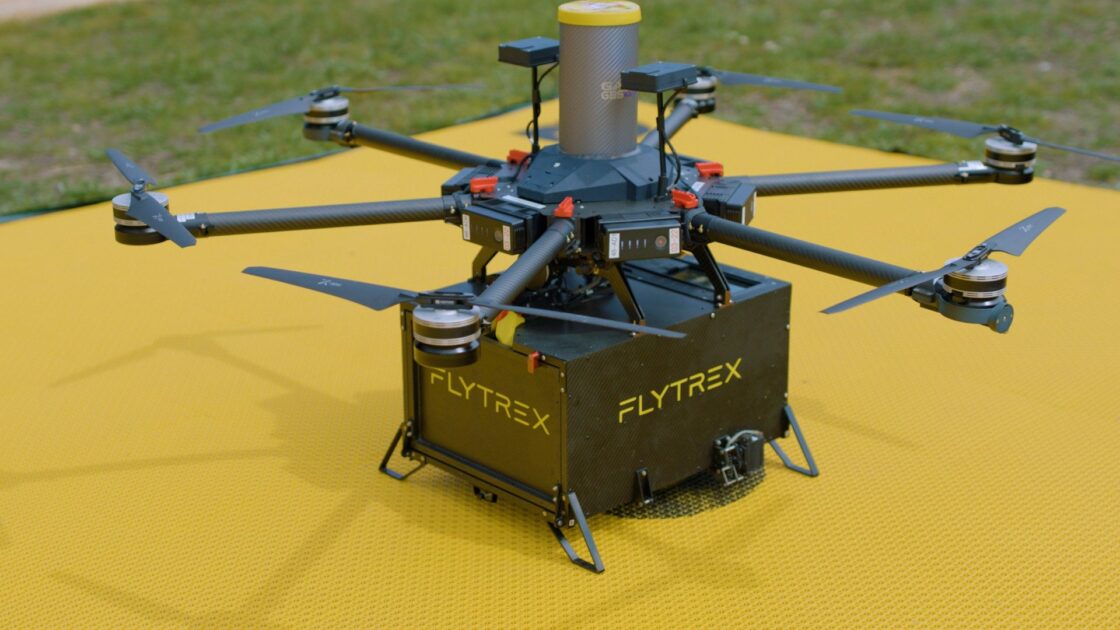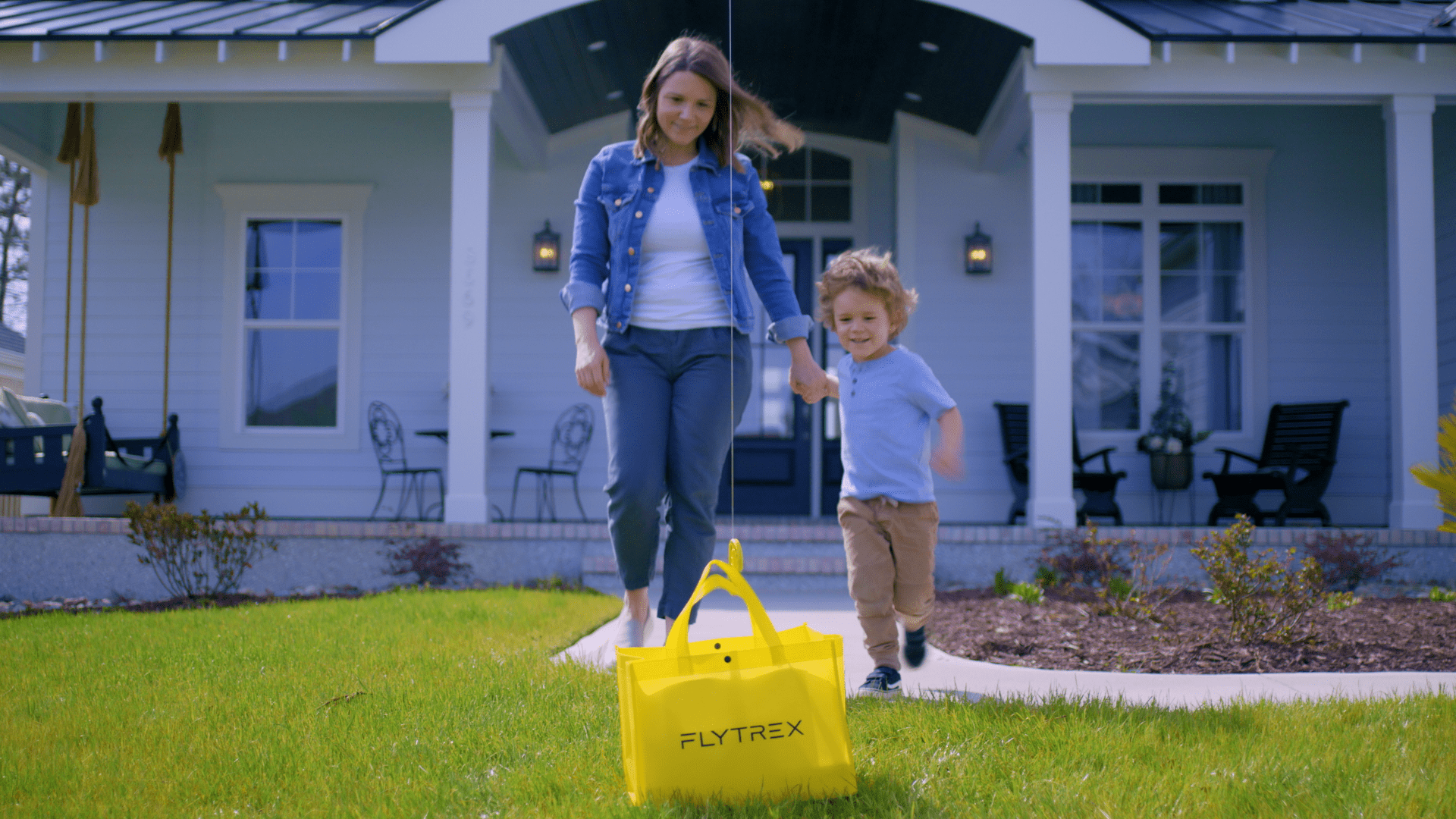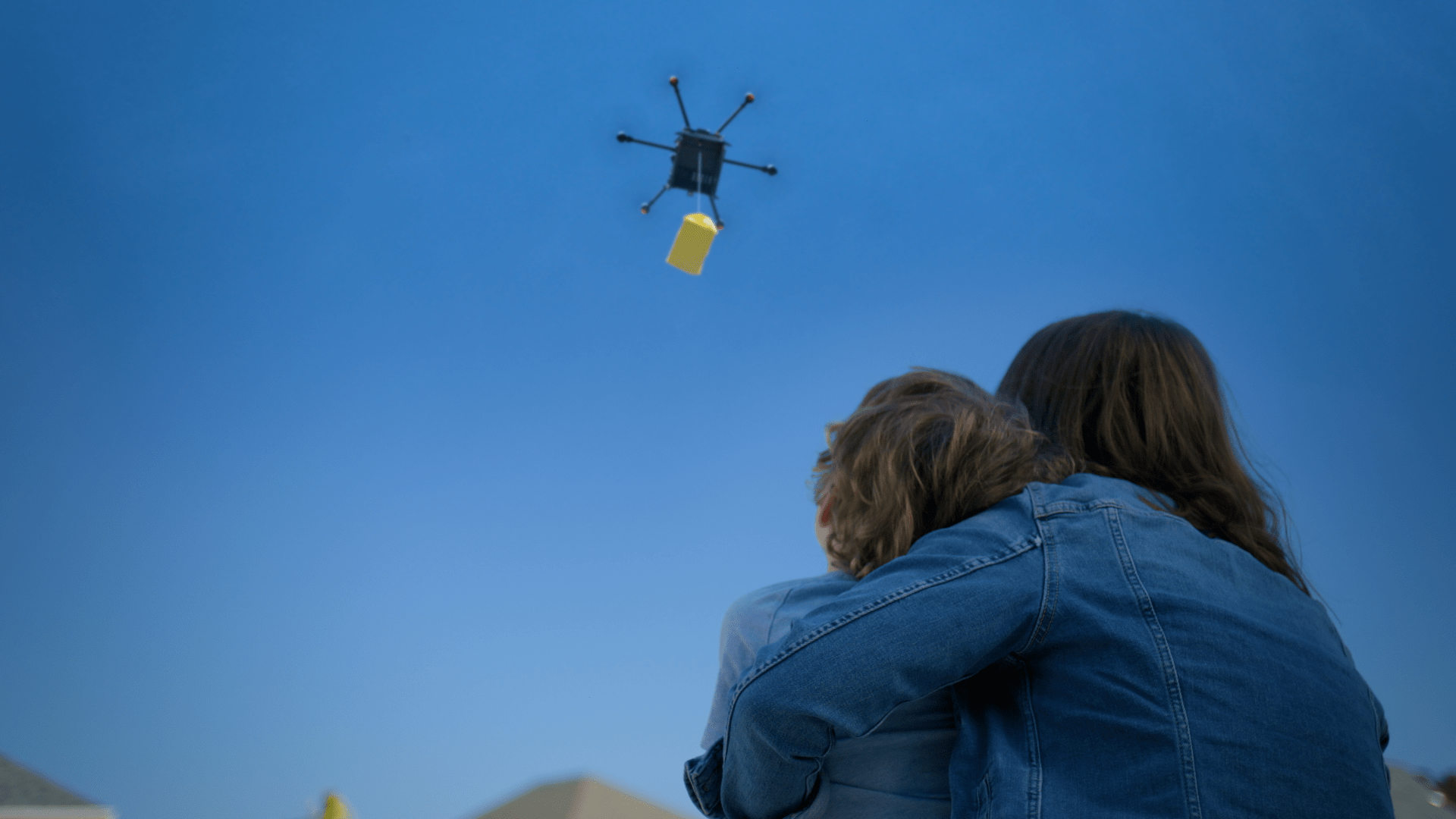
 Flytrex hits milestone of 100,000 food deliveries
Flytrex hits milestone of 100,000 food deliveries
by DRONELIFE Features Editor Jim Magill
Flytrex, a drone-based food delivery service with operations in North Carolina and Texas, on Tuesday announced it had reached the milestone of making 100,000 food deliveries, making it the largest operation of its kind in the country. In a statement, the company said 70% of the households in its four delivery areas — Holly Springs and Raeford, southwest of Raleigh, North Carolina, and Granbury and Little Elm in the Dallas/Fort Worth area — use the service.
“We are the largest home delivery provider in the U.S.,” Yariv Bash, Flytrex’s CEO, said in an interview. “And these are actual deliveries to paying customers, to people’s backyards.”
Flytrex’s service is specifically tailored to make on-demand deliveries in the suburban markets where the majority of Americans live. The company partners with restaurants and other business to deliver food to homes and businesses within a two-and-a-half-mile radius. Its six-rotor drones generally fly at 32 mph, enabling the company to reach a customer’s backyard in less than five minutes.
“That’s fast enough to keep your ice cream from melting and your coffee hot,” the company said.
“We optimize the entire system for hot meals. And it’s the perfect system for on-demand food delivery or a dinner for a family in the suburbs,” Bash said. He said the entire system, from the time a customer places an order to when the drone delivers that order and returns to its station, is completely autonomous.


“We do have an operator, but it’s multiple drones per operator,” he said. “There’s no real-time control or anything like that. We don’t have any cameras or video feeds.” Once a customer places an order, the system pushes that order out to the different commercial venues that Flytrex partners with. Under its current system, a Flytrex employee picks up the orders from the vendor, but the company hopes to be able to eliminate this step in future deliveries.
“A human then brings it to the station, loads it on the drone, and then just presses a button on the tablet on our drone control station, and from there the drone takes off, flies to the customer’s backyard, lowers the package on a tether and flies back,” Bash said. “In the future the drone will pick up the order directly from the restaurant, similar to how a curbside pickup happens today.”
Flytrex currently has authorization to fly beyond the visual line of sight of the drone operator and hopes to soon obtain FAA certification to be able to conduct flights beyond the visual line of sight of a visual observer as well, he said. Bash said Flytrex’s electric-powered drones are designed as “e-bikes in the sky,” capable of autonomously delivering payloads of up to 5.5 pounds – whether it’s a single burrito or a full meal — safely and efficiently.
“When you’re ordering a hamburger with a traditional on-demand app, usually the courier does not arrive in a shiny new BMW because that’s not how the unit economy works. And it’s the same with drones,” he said. The company’s UAVs use a wire-release mechanism, which allows the drone to hover at 80 feet about the customer’s location and gently lower the order to the ground. “So, even if you’re ordering coffee from Starbucks or slushies, or whatever you’re ordering, it won’t spill,” he said.
He added that the drones are equipped with a number of navigation and safety features to allow for smooth autonomous operations. “We have multiple redundancies, in rotors and motors and battery GPS. We can sustain multiple problems and still return home successfully.” Bash said Flytrex’s operations have demonstrated that the company has successfully achieved MVP status, demonstrating that it has produced a Minimum Viable Product.


“With startups, usually what they say is that, once you reach a minimum viable product, you go out and, play with it and see what customers think of it. So that’s certifying the drone, having it flying above people, above towns,” he said. “But when it comes to aviation and drones, there’s another step that’s more important and even harder than that,” Bash said. “Because in the end, it’s not about showing that drones can deliver. It’s about showing that drones can deliver better at a better price than the current alternative.”
This requires the construction of an entire ecosystem to support the drone delivery operations, he said. “The drone is part of it, but we actually have more people working on the cloud infrastructure that enables everything to happen autonomously, without the human in the loop, and with dozens of drones with a single operator. “And then you can scale it in a manner that makes incredible sense. Otherwise it’s going to remain a pie in the sky, just a nice marketing stunt,” Bash said. He said in the wake of successfully establishing a commercially viable drone delivery program in its four original locations, Flytrex plans to expand its operations by opening more locations in the Dallas area and in the Raleigh/Durham region of North Carolina later this year.
Currently Flytrex’s restaurant partners include Jersey Mike’s Subs, Little Caesars Pizza, Papa Johns, Raising Cane’s and several others.
Read more:

 Jim Magill is a Houston-based writer with almost a quarter-century of experience covering technical and economic developments in the oil and gas industry. After retiring in December 2019 as a senior editor with S&P Global Platts, Jim began writing about emerging technologies, such as artificial intelligence, robots and drones, and the ways in which they’re contributing to our society. In addition to DroneLife, Jim is a contributor to Forbes.com and his work has appeared in the Houston Chronicle, U.S. News & World Report, and Unmanned Systems, a publication of the Association for Unmanned Vehicle Systems International.
Jim Magill is a Houston-based writer with almost a quarter-century of experience covering technical and economic developments in the oil and gas industry. After retiring in December 2019 as a senior editor with S&P Global Platts, Jim began writing about emerging technologies, such as artificial intelligence, robots and drones, and the ways in which they’re contributing to our society. In addition to DroneLife, Jim is a contributor to Forbes.com and his work has appeared in the Houston Chronicle, U.S. News & World Report, and Unmanned Systems, a publication of the Association for Unmanned Vehicle Systems International.
Miriam McNabb is the Editor-in-Chief of DRONELIFE and CEO of JobForDrones, a professional drone services marketplace, and a fascinated observer of the emerging drone industry and the regulatory environment for drones. Miriam has penned over 3,000 articles focused on the commercial drone space and is an international speaker and recognized figure in the industry. Miriam has a degree from the University of Chicago and over 20 years of experience in high tech sales and marketing for new technologies.
For drone industry consulting or writing, Email Miriam.
TWITTER:@spaldingbarker
Subscribe to DroneLife here.

